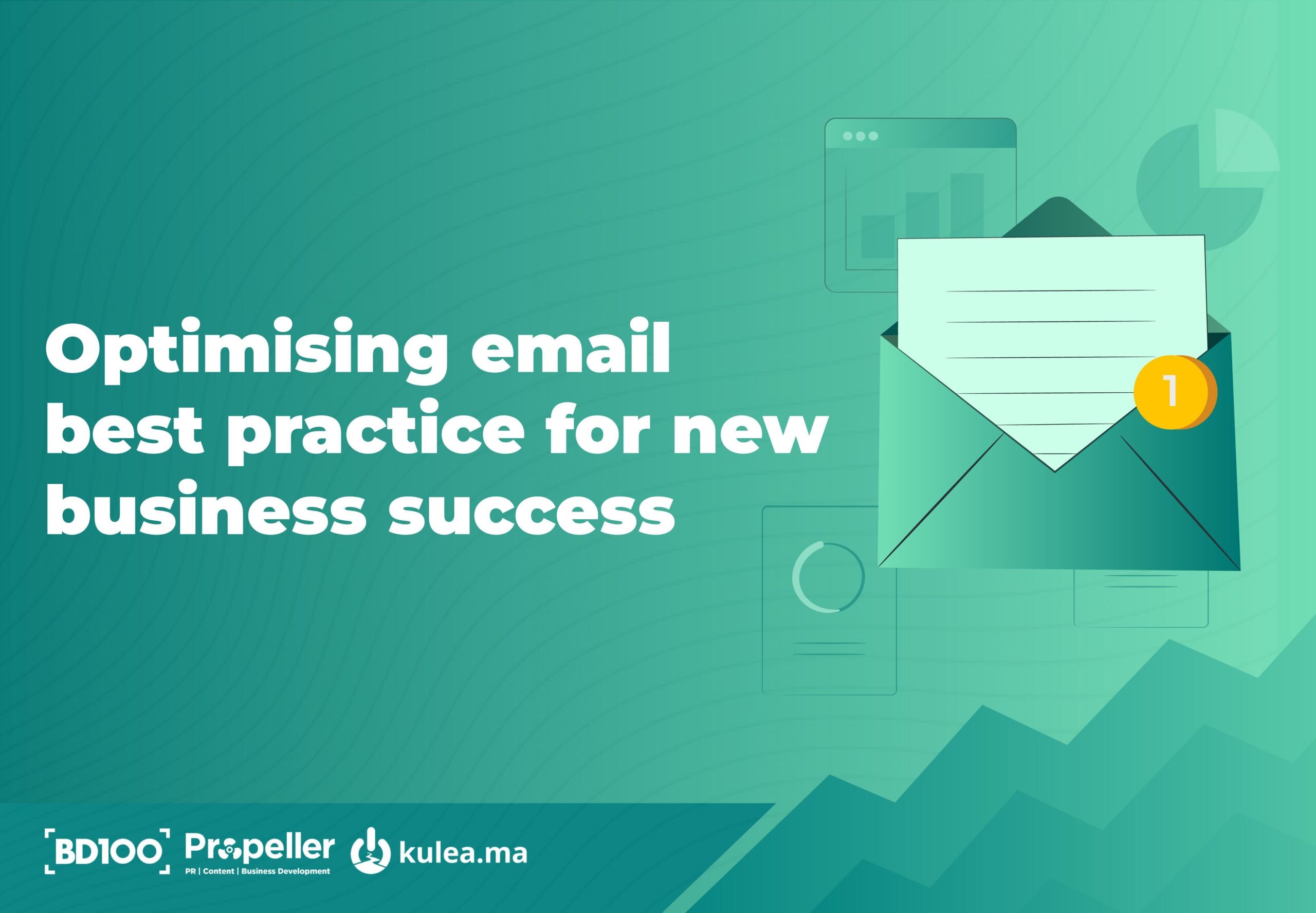What’s business really about?
When you strip it back to basics, it’s about reaching out to strangers and saying “Hi, we think we can help you!” And whilst there’s no shortage of ways to reach out to prospects (telephone and social media spring to mind), email has historically been the go-to tool in the marketing playbook.
This strategy isn’t a slam dunk, however. Yes, sending out email campaigns and targeted outreach can open the door to new, exciting opportunities. But there’s also pitfalls that should give cause for pause.
Propeller Group’s latest masterclass – Optimising email best practice for new business success - examined how to increase deliverability, open rates, responses and replies. The session’s host, Andrew Nicholson, Founder and CEO at Kulea MA, highlighted the importance of maintaining a good reputation and how to effectively navigate the technical elements.
A new, relevancy-driven era
Andrew kickstarted the session by discussing how email marketing had evolved over the years. “Rewind 15, 20 years, I would happily send out thousands of emails to a cold audience and get great results. A standard email would receive plenty of responses and drive new business. But times have changed.”
The reason being is that email, as a channel, became almost too cheap. This saw it be abused by spammers and lazy new business developers, with email service providers (ESPs) subsequently erecting lots of hurdles to prevent abuse. Bottom line: genuine high-quality outreach has been caught out.
With the landscape becoming increasingly cluttered, marketers have been forced to change tack. And when it comes to cutting through the noise, few strategies are quite as effective as leaning on nuanced, unique content.
“It’s all about relevance. Targeting and personalisation is key to making sure your emails resonate with the audience. If you’re not doing that, everything becomes redundant. Using relevant comms to respond to their pain points drives higher engagement and creates a virtuous cycle. More emails get into their primary mailbox, resulting in more responses, more meetings and more opportunities.”
Fail to acknowledge this changing wind and integrate tailored copy, and you will quickly find that you’ve alienated your prospects. What’s more, this will have a sustained ripple effect that’s far from desirable.
“Nobody’s taking generic emails with no personalisation out of spam. Expect more spam complaints, which will cause your mailbox and domain reputation to deteriorate. Open and response rates will drop. This is a negative cycle that will see your communications become completely worthless.”
It is a pyramid scheme
Perfecting your email style is only part of the puzzle. Best-in-class new business practitioners have to understand and navigate the increasingly complicated technical hoops surrounding email marketing.
Andrew likens this infrastructure to a pyramid, with your IP reputation sitting at the top of this. “The server that sends the email on your behalf has a reputation. If you’re at 100%, that’s brilliant – but anything less than 80% is a red flag. This depreciation will cause ESPs to hold your emails to a higher sender and reputational threshold.”
However, this may not solely be down to your business. Sharing an IP with a business sending spam emails can have negative implications for your campaigns. If this is the case, talking to your ESP can allow you to get onto a more reputable server – potentially a dedicated one.
Domain reputation is the next rung down, showing how your company’s domain is perceived by ESPs. And Andrew was keen to highlight how in this pyramid, your reputation trickles up and down.
“If you’re sending lots of emails from a bad IP, this will affect your domain reputation. If you have a bad domain reputation, that will ultimately affect your ESP’s IP reputation – and they’ll come down on you like a ton of bricks to stop your campaigns from going out.”
The incentives to preserve your domain reputation extends beyond placating your ESP. Relying on bad datasets and persistently sending emails to people that don’t want them will lead to complaints, subsequently affecting your day-to-day deliverability and generate a downward cycle.
Finally you have your mailbox reputation – which Andrew compared to your credit score. “It improves as long as you don’t do anything daft. When you set up a new mailbox, you have no reputation – meaning you’re treated with suspicion by ESPs. This is where mail warmup tools such as MailReach come into play.”
These platforms send emails to a friendly pool of other mailboxes within their customer group. This is done automatically by bots and ramps up gradually. This generates conversational history, teaching the algorithms and deliverability engines that you’re sending good emails.
Don’t get lost in the mail
Andrew rounded the session off with some words of wisdom about performance – and why you shouldn’t just be focussing on the positives. “On average, your open rate should be over 30% and your response rate between 5–10%. And whilst these may not always be glowing responses – but make sure you respond, that’s good manners.
If you fall into this bracket, 1–2% of these are positive and should convert into meetings. They will ask questions about your service offer, requesting decks and pitch information. These are the benchmarks you should be aiming for.”
You can watch the full masterclass below:
Keen to hear how Propeller Group can drive new business success? Reach out to us at newbiz@propellergroup.com.
